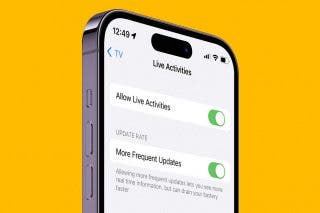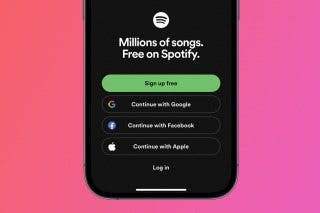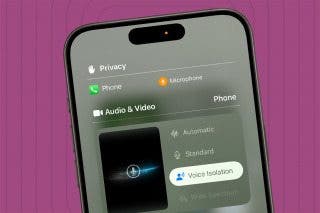Do You Read on Your iPhone?


In the 94th episode of the iPhone Life Podcast, members of the team discuss the pros and cons of reading books on their iPhones, using a Kindle, listening to audiobooks, or buying old-fashioned paperbacks. Other topics include how to take advantage of iOS 12's location-based Do Not Disturb settings, tuning apps for musicians, and an iPhone game that has recently become Sarah’s guilty pleasure.
Click here to listen and subscribe. If you like what you hear, be sure to leave a review. And remember to tune in every other week to hear our editors share with you the latest Apple news, best apps, iPhone tricks, and coolest accessories.
This episode was brought to you by Jamf. Seamlessly set up and manage all of your Apple devices with Jamf Now. This cloud-based mobile device management software allows you to remotely configure (everything from Wi-Fi settings to email accounts) all of the iPads, iPhone, and Mac computers at work or at home.
Question of the week:
How do you like reading books: On your iPhone, iPad, or a Kindle? Hard copies? With audible? Why? Email podcasts@iphonelife.com to let us know.
Articles referred to in this episode:
Apps & podcasts referred to in this episode:
- Pokémon Go (free)
- Pano Tuner (free)
- Talk the Talk
- Safari
Useful links:
- Join the iPhone Life Facebook Group
- Become an iPhone Life Insider
- Sign up for the free Tip of the Day Newsletter
- Email the Podcast
- Subscribe to iPhone Life magazine
Episode 94 Transcript:
Donna Cleveland: Hello and welcome to Episode 94 of the "iPhone Life" podcast. I'm Donna Cleveland, Editor-in-Chief at iPhone Life.
David Averbach: I'm David Averbach, CEO and Publisher at iPhone Life.
Sarah Kingsbury: And I'm Sarah Kingsbury, Senior Web Editor at iPhone Life.
Donna Cleveland: Each episode we bring to you the best apps, top tips, and great gear in the iOS world. This episode we have a sponsor. We'd like to tell you about Jamf.
David Averbach: Jamf is a software that lets you set up iPhones for the enterprise. If you're a company that provides iPhones, there's all sorts of different management things you need to think of, including security, loading up custom apps, things like that. This lets you manage all of that stuff really easily and it's set up specifically for the iPhone. Up to three devices are free, so I encourage you all to go check it out at Jamf.com.
Donna Cleveland: Yes, awesome. Also, we want to tell you about our daily tips newsletter. If you go to iPhoneLife.com/dailytips, you can sign up to learn something cool you can do with your iPhone in one minute a day. Today, we wanted to share with you an iOS 12 tip.
A lot of you are probably getting used to Apple's updated operating system and as we've heard from many readers, people don't always, with iOS 12, have updated and been like, "What's new? Everything looks the same." That's because some things are a little more hidden.
We've also, in our last episode, we just talked about best and worst features of iOS 12. Our top favorite feature of iOS 12 is just that it doesn't seem that different because last year with iOS 11, a lot of the problem was that they updated and suddenly their battery was draining really fast, and things were crashing, and there were all kinds of weird bugs. Email us to let us know if you're having any of those problems, but from our experiences and what we've heard so far, that has not been the experience. It's a stability update and, if anything, should boost the performance of your device. That's awesome.
But the feature we're going to talk about today in this tip is Shortcuts. Apple added a Shortcuts app with iOS 12, which you actually have to go to the app store and download. Just open the App Store up, search Shortcuts, and install it on your device. If you had the Workflow app, that's a third party app, if you already had that on your phone, then Shortcuts should automatically replace it on your device. That's what happened for me.
This app allows you to create multiple actions that are triggered by either a Siri command or by using a button on your phone, which the Shortcuts app will tell you how to get to. An example of this would be something like, "Heading to work," and then your Maps will be triggered, a podcast you listen to on the way to work will be triggered, things like that. This direction is – this is a really simple way to get started with Shortcuts and it's how to get directions home with the Shortcuts app.
Once you have it installed on your device, you open the Shortcuts app, then you tap Gallery. There's two tabs on the bottom: Library and Gallery. Under Gallery, you'll see a few options of suggested shortcuts for you. One of them will say, "Head Home."
As we pointed out in the last podcast, you already can tell Siri to give you directions home as long as you have your address saved in your contact, but that will, by default, use Apple Maps and a lot of people – Google Maps is arguably better. A lot of people, if you live in a big city, Waze is amazing. You can use those now by saying, "Give me directions with Google Maps or with Waze" using Siri, but with this, you can set it up so those are your defaults. It's still a good tip even though it's something you can do already.
Once you tap that card, you'll have the option to customize that. You'll enter in the address of your home or your work, wherever you're heading, and you'll have the option to choose between any of the third party navigation apps you have, or of course Apple Maps, if that's your default one you use.
Then after once you've set that up, you can just use Siri to get directions home easily and that's a good way to get started with Shortcuts. There's a lot more you can do. All three of us are still figuring it out also, but I think this is a nice way to dip your toes in. So iPhoneLife.com/dailytips will walk you through exactly how to do that with nice step-by-step instructions with screenshots. It makes it really clear and easy to just learn new things with your device with very little time commitment. We recommend checking it out.
Now we want to talk about our insider subscription. If you are an iPhone Life insider, we have now created a version of the podcast for you that does not have ads. We wanted to let you know that because, of course, for other listeners who don't know about insider, we think it's an awesome program, we want to share information about it with you. It's our premium educational service. If you go to iPhoneLife.com/insider, you can learn more.
But just real quick – you get video versions of the tips. So you get a video walk-through, which makes it even easier to learn; you get in-depth guides; a full archive of our magazine; you also get Ask an Editor where you can send in specific tech problems you're having and Sarah troubleshoots it for you and helps walk you through how to find a solution.
David Averbach: And in addition, the newest thing in addition to having an ad-free version of the podcast, it's an extended version of the podcast. We'll have extra content each episode just for insiders.
Donna Cleveland: Yes. This episode or each episode, we have Sarah share a recent question from an insider and how she helped them solve it.
Sarah Kingsbury: All right, this is what the insider wrote to me. "I want to place a PDF file on my mac onto my iPhone and iPad. I assume I need to do it via iTunes by syncing the devices, but I'm not sure. Any help would be appreciated."
I don't use iTunes for anything if I can help it. The nice thing is now if you're signed into iCloud, a lot of times things will just show up from one device on the other.
David Averbach: I haven't opened iTunes in years. Have you guys?
Donna Cleveland: Not really.
Sarah Kingsbury: Sometimes when I'm working on how-tos for work.
David Averbach: Can I confess something really quickly?
Donna Cleveland: Sure.
David Averbach: When I set up my beta, they told me to go back my iPhone up on iTunes and I hate iTunes so much, I was willing to risk just losing everything to not have to deal with it.
Sarah Kingsbury: Me too!
David Averbach: And I didn't even plug it in!
Donna Cleveland: I did to an iTunes back-up and it was actually pretty easy.
David Averbach: Oh, okay.
Sarah Kingsbury: It is easy, it is easy. The days of really having to sync your device a whole bunch are behind us because you can ... All of your music can be in the cloud, your photos can be in the cloud, a lot of your documents can be in the cloud.
One way to easily have a PDF be on all three of your devices is just to put it in your Books app. I actually surprisingly use my Books app a lot for PDFs. I don't actually get books from Apple. Kindle all the way. And actually have been returning to hard copy books recently, but that's-
David Averbach: How come? It's a different story that we're going to explore.
Sarah Kingsbury: Because ... Well, I talked about this a little bit. My problems with how I use my phone and how it detracts from my quality of life is I get distracted when I'm doing something that I feel like has more value to me, like watching a show I really enjoy or reading a book. If I'm reading it on my phone, the odds that I will stop reading it and start looking at Facebook are pretty high.
Donna Cleveland: That's true, yeah.
David Averbach: I have to say one of my all time favorite tech devices that I don't talk about very much on this show because it's not Apple is my Kindle Paperwhite because A) I can read and I don't get distracted with Facebook and things like that, but B) that feeling ... I don't find the screen on iPhone, as great as it is, to be the same experience as reading a hard copy book, but I find Kindle to be pretty close because it's e-ink and you don't get distracted. I love mine.
Sarah Kingsbury: Yeah. Another reason I love hard copy books is that it's really much easier to ... I read a lot of nonfiction. Novels, I will read on my phone more often, but if you're reading a nonfiction book and you want to go back and forth, like check back on something they said earlier, it's so much easier in a book.
David Averbach: Yeah, that's true.
Sarah Kingsbury: But anyway, that is completely off topic. Returning to using Books for PDFs.
If you are signed into – this person has a Mac – if you're signed into Books on your Mac with your iCloud account and on your iPad and your iPhone, any PDF you put in that app on any of those devices will show up on all the other ones. If you have a PDF on your Mac that you want to show up on your iPhone and iPad, you open Books on your Mac, you choose File, and then choose Add to Library. And then in the Open dialog, you just look through the menu on the things on your computer, wherever you have that PDF stored. Click on the one, the PDF you want, and then click Add. That's it.
Or you can actually just probably drag it just right from your desktop into Books, which is what I would do. Or if you really want to iTunes, you can plug your iPhone or iPad into your Mac, and then iTunes should automatically open and you'll see a little device icon on your iPhone or your iPad and you click on that. Then there will be an option for file sharing, probably on the left side, and you click on that and then you'll have to choose an app to import the PDF to. You choose that app, click Add, select the file, and then click Add again.
David Averbach: Couldn't you also use either Dropbox or iCloud?
Sarah Kingsbury: Yeah, right. In my answer to him, I mentioned any kind of basically cloud-based file sharing, even Adobe. If you want to be able to really edit and do a lot of things with those PDFs, it might be worth subscribing to the Adobe Cloud option.
David Averbach: Lots of options.
Sarah Kingsbury: That don't involve plugging your iPhone into your computer.
David Averbach: I find PDFs to be one of the most confusing file types though, so I don't blame him for getting confused.
Donna Cleveland: Even though this was an off-topic conversation related to this tip, I think we should make this our question of the episode of how do you like reading your books and that include on your iPhone, iPad, Kindle or hard copies, and why? Or maybe there's other options I'm not thinking of how to read books. Audible, yeah, eBooks.
David Averbach: Audiobooks.
Donna Cleveland: Audiobooks.
Sarah Kingsbury: Yeah, a lot of people don't even read anymore, they listen to the books, which is-
Donna Cleveland: Yeah. One interesting – oh, sorry.
Sarah Kingsbury: You're still reading the book.
Donna Cleveland: Yeah, sorry to interrupt you.
One interesting thing I think to explore would be what types of books do you use different formats for because Sarah, for instance, was saying with nonfiction books that she likes being able to have the tactile, being able to go back and forth in the book, reference back some area that she was interested in. Whereas I have the opposite thing where, for a lot of times for what I consider drier reading informational, I'll get a Kindle book for that because I'm not really wanting to unplug as much while I'm reading that type of thing. I'm usually researching or something like that. Whereas if I'm reading something more for fun, I want that to be a hard copy that I can chill on my couch with and get into a different zone with. That's my-
David Averbach: That's sort of my experience with audiobooks, actually, which is I have a hard time with dense material on audiobooks because I find I'll kind of-
Donna Cleveland: Glaze over?
David Averbach: Zone out a little bit and I'll just miss critical chunks or the worst is if somebody-
Donna Cleveland: That makes me feel better because that happens to me. I'm like, "Wait, what just happened? I've been cooking and listening and now I don't even know."
David Averbach: The worst is if you're doing a nonfiction book that has charts and graphs and things like that and they're trying to explain this graph on an audiobook and it just doesn't work at all, but I love audiobooks because I don't get a lot of time to read, as much time as I'd like. Whereas I can have an audiobook going in my car, while I'm getting ready, and you can plow through a book pretty quickly via audiobook, which is why I tend to use ... I guess I'm pretty on Amazon camp as opposed to team Apple because A) I have a Kindle, but B) you can do an Audiobook and a Kindle and you can switch back and forth.
Donna Cleveland: I love that feature. That's so cool.
Sarah Kingsbury: Yeah that would be great because I find myself, I don't listen to audiobooks, but I feel like listening to podcasts is a similar exercise to listening to an audiobook. So there's times when I'm not really doing anything that requires a lot of focus, but it's taking up my hands and eyes. Being able to listen is really a great option.
Donna Cleveland: Yeah. Isn't that a feature with Amazon called Whisper Sync?
David Averbach: Yeah.
Sarah Kingsbury: Yeah.
Donna Cleveland: It'll pick up exactly where you were with the audiobook version and then will show you that page when you open the Kindle app. That's really nice.
David Averbach: In theory.
Donna Cleveland: Oh!
David Averbach: I will say that I find that it doesn't always Whisper Sync accurately.
Sarah Kingsbury: I find it works really well for when you're reading a book because it will be the same, say, if I'm reading on my iPad and then I switch to my iPhone. I find it works really well just for the eBook, but maybe-
David Averbach: It's often when I'm trying to go from audio to Kindle and vice versa. It struggles to get it right.
Donna Cleveland: Interesting. Yeah, I've used it a few times and it worked for me well, which is nice. Another thing that'd be interesting to explore is playback speeds for audio speeds like what people ... If they have any hacks for that or how you handle that because sometimes I want to get through a book faster, so I'll adjust the speed up a little bit and play it back at, let's say, 1.2x speed. I find if I get much higher than that, it is not the best listening experience for me. Do you guys have thoughts on that?
Sarah Kingsbury: I sometimes listen to podcasts at a faster speed. Never too fast because you can't understand it, but if people speak slowly, then it's pretty easy to do, especially newsie shows. I listen to one podcast that's basically the take of radio news show that explores in-depth topics. They have that very measured way of speaking, so I don't really lose a lot of comprehension from speeding them up.
And then I listen to this other podcast that it's an Australian group of people that do it. They speak really quickly and of course I understand what they're saying but it's a slightly different accent. The topic, it's linguistics, so it's pretty ... Sometimes it can get dense in terms of-
David Averbach: What is it?
Sarah Kingsbury: "Talk the Talk."
David Averbach: Ah.
Sarah Kingsbury: So sometimes they're getting into really heavy or really granular areas of that. If it's too fast, I can't really follow it well.
David Averbach: I hate it. I really want to be able to listen to podcasts faster so I can get more information quicker, but even if I can understand it, which sometimes I can, sometimes I can't, it just drives me crazy.
Donna Cleveland: I'm just imagining David at home listening and getting really grumpy.
David Averbach: Well, no, I'll tell you what" the only bug for iOS 12 Beta that I had, I don't know if you guys had this, is my podcast app would randomly switch to 1.5.
Donna Cleveland: Really?
David Averbach: Yeah.
Donna Cleveland: That's so weird!
David Averbach: It was. I'd be sitting there and often times I'll do it while I'm getting to be in the shower or something where I can't easily – or driving – where I can't easily go switch it. I'd just sit there, get so grumpy trying to follow them talking way too fast.
Donna Cleveland: Yeah. I'm more in the Sarah camp where it totally depends on the type of content and the voices, but a lot of times because I don't always remember to even try a different playback speed because it's not something I can apply across the board. It doesn't work across the board for me.
I don't understand the 2x being an option even. Who's listening to 2x?
David Averbach: Yeah!
Sarah Kingsbury: Well, I might do that. There's a part ... Some podcasts have five straight minutes of ads at the beginning.
David Averbach: Oh, that's a good idea.
Sarah Kingsbury: And you don't want to ... Trying to get it just right by sliding along with your finger or tapping the jump ahead 30 second things. If you just put it on 2x the speed and then slow it down once they stop talking about the-
Donna Cleveland: That's a good idea.
Sarah Kingsbury: It's always those cooking food services that they send you all the ingredients.
Donna Cleveland: Blue Apron!
Sarah Kingsbury: Yeah, it's always – I was trying not to mention them.
Donna Cleveland: Oh, sorry.
Sarah Kingsbury: I didn't want to give them a plug, not that there's necessarily anything wrong with them.
David Averbach: I like them. Just going to throw that out there, I like Blue Apron. Don't do this on our podcast though. Listen to all our ads. Thanks a lot. Or subscribe to insider where you don't get ads. Nailed it! Let's get back on topic.
Sarah Kingsbury: All right, cool.
Donna Cleveland: Apps and gear. Let's talk about our apps and gear this week that we're loving. Sarah, do you want to start us out?
Sarah Kingsbury: No because I'm so embarrassed.
Donna Cleveland: What?
David Averbach: I'm so excited now.
Sarah Kingsbury: There's this app that was incredibly popular two years ago.
Donna Cleveland: Of course.
Sarah Kingsbury: And now no one uses it anymore.
David Averbach: Confessions of an addict.
Sarah Kingsbury: Of course that is when I picked it up.
Donna Cleveland: When no one used it anymore?
Sarah Kingsbury: Nobody ... I mean, some people do, but it's a very special group of people.
David Averbach: Hi, my name's Sarah and I'm addicted to ...
Sarah Kingsbury: Pokémon GO.
Donna Cleveland: Ah! That's amazing.
David Averbach: Why are you enjoying it two years late?
Sarah Kingsbury: Because I can play it while I walk my dogs, because I can ... I think that's a large part of it is because I'm walking my dogs, or I'm outside walking around, and it's something to distract myself because apparently focusing on one thing is now hard in world of smartphones. It also doesn't ... Of course, I immediately turned the sound off as I do with every game, so it doesn't have an audio component that distracts me from my surroundings necessarily, although you do have to really make a concerted effort to look up from your phone, look both ways, and then don't look at your phone when you cross the street.
David Averbach: It's definitely the most likely iPhone game to kill you.
Sarah Kingsbury: Yeah. Yeah, fair.
But you know, it's interesting because there are a group of people who are really enthusiastically playing it and I've met a lot of people in our town who play it and are really serious about it. They're people I wouldn't necessarily meet because we just are ... The little words we occupy each day don't necessarily coincide too much. Actually, it's the only iPhone game I can really think of that forces you to leave your house and interact with other people and meet new people, which can be sometimes a problem.
Pokémon GO, you send gifts to people and they'll get Poké Balls or other little tokens that do things in the game. But they're in the form of post cards, and you get them from what they call Poké Stops that you spin to get things for the game. If you are Pokémon GO friends with someone and you're sending them these little gifts-
David Averbach: I love how sheepishly you're explaining this.
Sarah Kingsbury: Hey, you know what? Roxane Gay plays Pokémon GO, so I'm okay because I love Roxane.
David Averbach: There you go.
Sarah Kingsbury: But the problem is if you send someone enough of these gifts with these little post cards saying where the Poké Stop was, they can figure out where you are most of the time. I live in a small enough town that there's just not that many Poké Stops but that could actually be an issue, so you need to be safe.
Also, for me even in a small town, walking alone at night can be not a good idea. I was sharing a slightly alarming experience I had where someone suddenly pulled to the curb where I was standing with my dogs late at night. It didn't end up being a problem but I thought I was going to text emergency SOS.
David Averbach: And instead her hypothesis is that they're also a Pokémon GO player.
Sarah Kingsbury: Yeah, I was ...
Donna Cleveland: Were you ate a Poké Stop?
Sarah Kingsbury: I was. But you know what? Because there's a whole community of Pokémon GO players and I've talked before about this really overactive Facebook Messenger chat that I'm in, that would be this group.
David Averbach: Oh!
Donna Cleveland: I was wondering what that was.
David Averbach: I was too. I was sad I wasn't in it.
Sarah Kingsbury: You can join. I was able to call out this behavior in the chat and get a lot of support and start a discussion about, "Hey, what is acceptable behavior when you're playing Pokémon GO or if you want to approach another Pokémon GO in public, especially if it's a woman alone at night?" You know?
David Averbach: Yeah.
Sarah Kingsbury: Having that social backup was nice.
Donna Cleveland: Cool.
David Averbach: For the record, I fully support you.
Donna Cleveland: I support you too.
David Averbach: Because number one, you do you, just like I'm ride my Lime scooters and look douchey. And number two, I actually think it's cool that it's a game that gets you outside and active as opposed to-
Donna Cleveland: Yeah!
Sarah Kingsbury: My dogs are so tired!
David Averbach: Yeah, that's perfect.
Donna Cleveland: I wanted to ask you actually if you ... You said you met people. Has that been a positive experience, like making new connections?
Sarah Kingsbury: I've only been playing for a month and a half and it's not like we're BFFs, but it's kind of fun to yeah, just meet people that I wouldn't otherwise meet.
Donna Cleveland: Yeah, that seems cool.
Sarah Kingsbury: It is cool because it's a small town and you feel like you know everyone, and then you join a different milieu within the town and you're like, "Oh, there's a whole group of people with different interests that I knew nothing about and that's kind of exciting."
David Averbach: Mm-hmm (affirmative).
Donna Cleveland: So David, what's your app or gear for the week?
David Averbach: Well, mine is actually related to last episode we just did. My app is a built-in app. I am making the jump back to Safari.
Donna Cleveland: Ah, okay, okay.
David Averbach: There's a few reasons for it.
First of all, we talked about it last week or last episode – this will be two weeks in your time, it's actually like 10 minutes ago for us – but Apple now has iCloud Key Chain, which is the password manager tool. They've integrated it with the iPhone and the computer, not only integrated it into the iPhone, but into all third party apps. You can access passwords if you use Safari for a website and then you download the app, you can access your password, which is really convenient.
But also, one of the reasons why I wasn't using Safari is a really silly reason, but I tend to have a lot of tabs open on my computer and for some reason, Safari killed off – it's called a favicon. It's that little icon in the tab that's a little picture that shows you what the website is. I had a really hard time navigating between apps and Safari because I couldn't see-
Sarah Kingsbury: You mean websites?
David Averbach: Yeah, between tabs is what I mean. I'd have a bunch of tabs open and I'd often switch back and forth between two or three of them. I couldn't see what they were and it was really difficult to navigate.
Donna Cleveland: The favicons are surprisingly useful.
David Averbach: Yeah! It was a weird thing to kill them off. Apple brought them back.
Donna Cleveland: Ah!
David Averbach: That's the main reason, those two things combined.
The third thing is that Apple, Safari is just ... I have Apple products across the board, which will surprise no one. It's just so nice to have it all integrated. For example, on the phone, Safari Apple actually lets it use its processor more to make Safari faster in processing JavaScript than Chrome is. Also, it's like you open a link and it automatically opens up in Safari. Sometimes I don't have my password there and I have to go reopen it up in Chrome.
Donna Cleveland: It's just more seamless.
David Averbach: So I'm making the leap back to Safari.
Donna Cleveland: Awesome. I support you David in that too.
David Averbach: Thank you, thank you. I'm going to do me.
Donna Cleveland: So my app this week is Pano Tuner.
I had one of my childhood friends come into town recently to visit and she was playing songs for me on the ukulele. I was having a lot of fun listening to her and I've been taking singing lessons recently as just a fun hobby. She's like, "Want a ukulele lesson?" So we did that. Part of playing a ukulele, I learned, is learning how to tune it. Pano Tuner is, I think it was $1.99 or something, but it will show you on the screen when you're hitting the note that you're trying to go for. As you fiddle with each string and play it, you can get them all tuned up and ready for your lesson. I think it was a fun app. It's definitely something that was more niche. It isn't going to apply to people unless you're playing a string instrument, but I thought it was a fun one. It's something we haven't really featured or talked about before.
David Averbach: Very cool.
Donna Cleveland: I know I've talked to other musicians who they really rely on iPhone apps for this type of thing. Mira, my friend of mine who's a pianist, uses – I don't know if it's Pano Tuner, but there are other options out there. This one's worked well for me so far for my 20 minutes of ukulele I played. Hopefully it's the beginning of something.
Sarah Kingsbury: I think it's great because for musicians, you either have to have a piano that's in tune to refer to, or you have to have incredibly good relative pitch, which is where you can tell what one note is in relate to another one.
David Averbach: Oh, it's so hard to do without an app.
Sarah Kingsbury: Or you could just be one of those really rare people who has perfect pitch, but that's almost no one.
Donna Cleveland: Not me!
Sarah Kingsbury: Yeah.
David Averbach: No.
Sarah Kingsbury: This is like you don't have to be near a piano or have ... Because you can get your sense of pitch to be really good, but most people will never have perfect pitch. This is a really good option to always have with you so you can get in tune.
Donna Cleveland: Yeah.
David Averbach: We need to wrap up, but if you are an insider, we will have a bonus section for you coming right up, but thanks everyone for tuning in.
Donna Cleveland: Yeah, thanks so much.
Sarah Kingsbury: Thanks everyone!
Donna Cleveland: See you next time.
David Averbach: Don't forget our question of the week which is what do you use: Apple, Kindle, hard copy books, audiobooks? Let us know how you read.
Sarah Kingsbury: Or a combination and why?
Donna Cleveland: Yes! And let us know.
David Averbach: We always appreciate when you let us know why, just FYI.
Donna Cleveland: Yeah.
Sarah Kingsbury: Yeah.
Donna Cleveland: Podcast at iPhoneLife.com. Thanks everyone.
Sarah Kingsbury: Thanks everyone!
David Averbach: Thanks everyone!

Sarah Kingsbury
As the Editorial Director at iPhone Life, Sarah Kingsbury manages the online editorial team and oversees all website content. She is a long-time Apple enthusiast who never goes anywhere without her Apple Watch and owns way too many HomePods. Since joining iPhone Life in 2013, Sarah has done everything from writing hundreds of how-to articles to founding the Daily Tip newsletter. She even co-hosted the early episodes of the iPhone Life Podcast. When not at work, Sarah can be found hiking in the mountains and canyons around Las Vegas, where she lives with her partner and dogs.
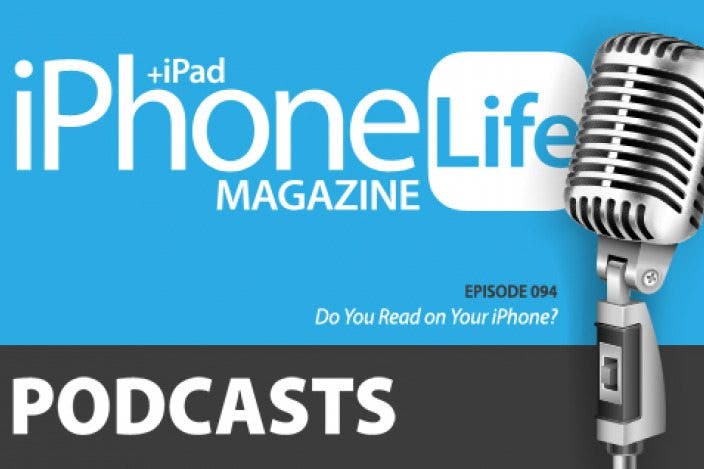
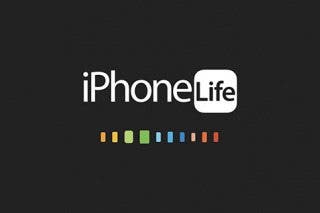
 Susan Misuraca
Susan Misuraca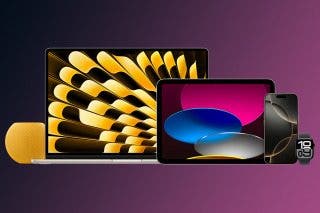
 Amy Spitzfaden Both
Amy Spitzfaden Both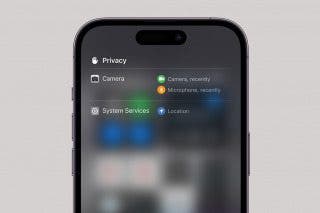
 Rhett Intriago
Rhett Intriago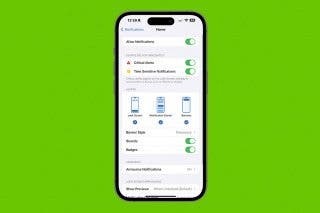
 Olena Kagui
Olena Kagui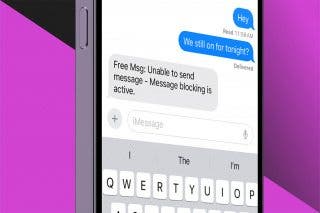
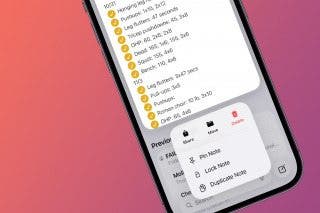
 Rachel Needell
Rachel Needell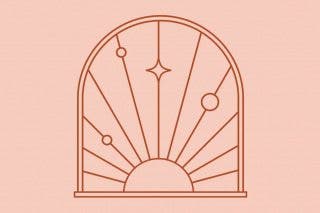
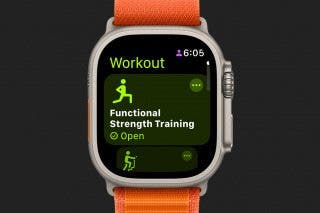
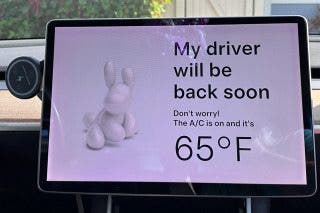
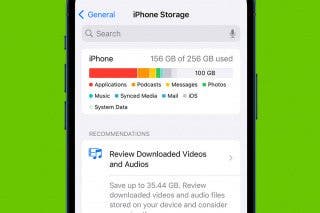
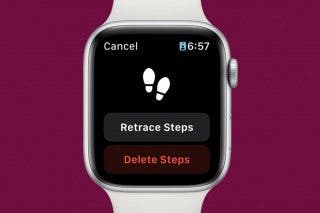
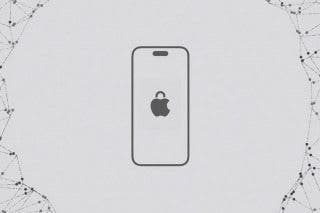
 Cullen Thomas
Cullen Thomas